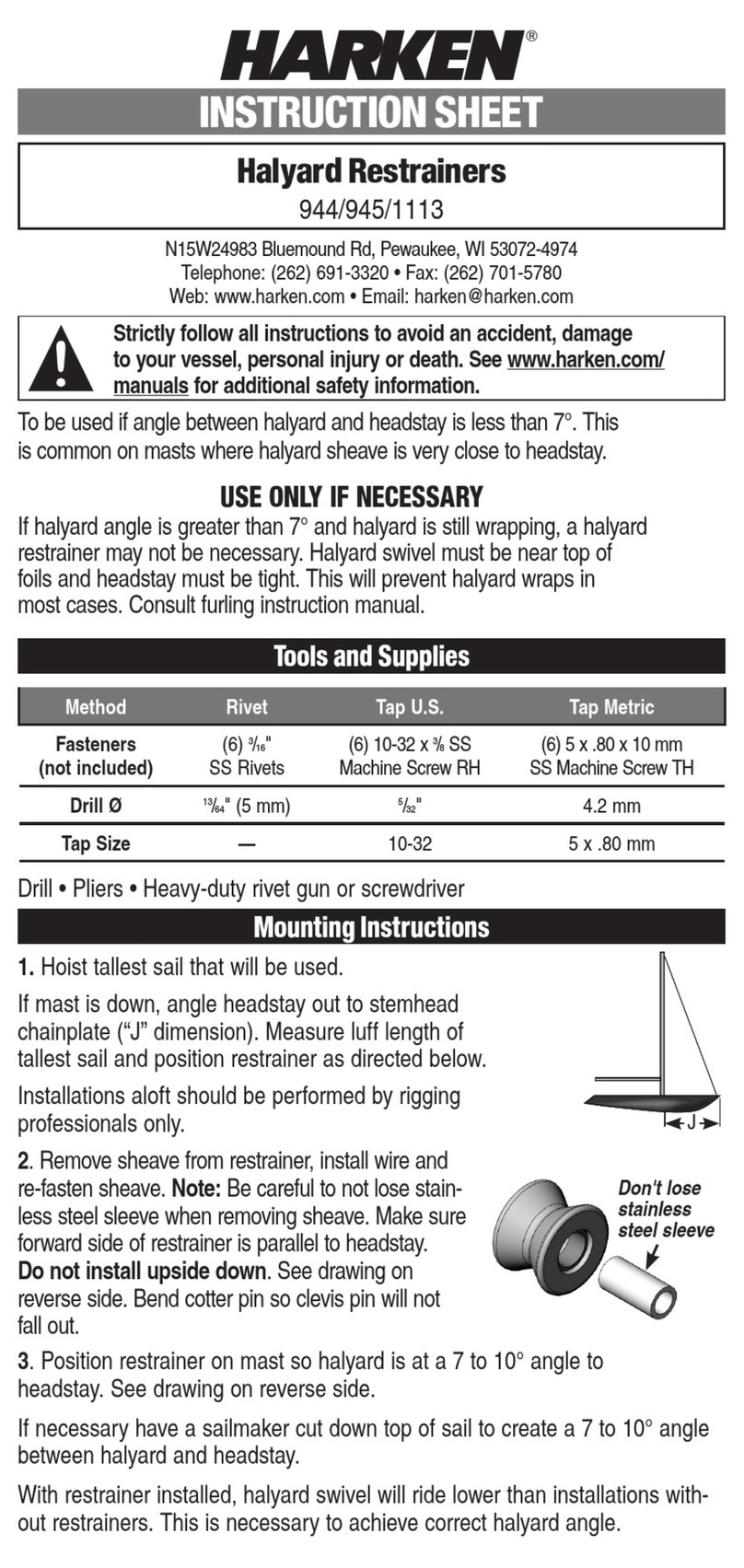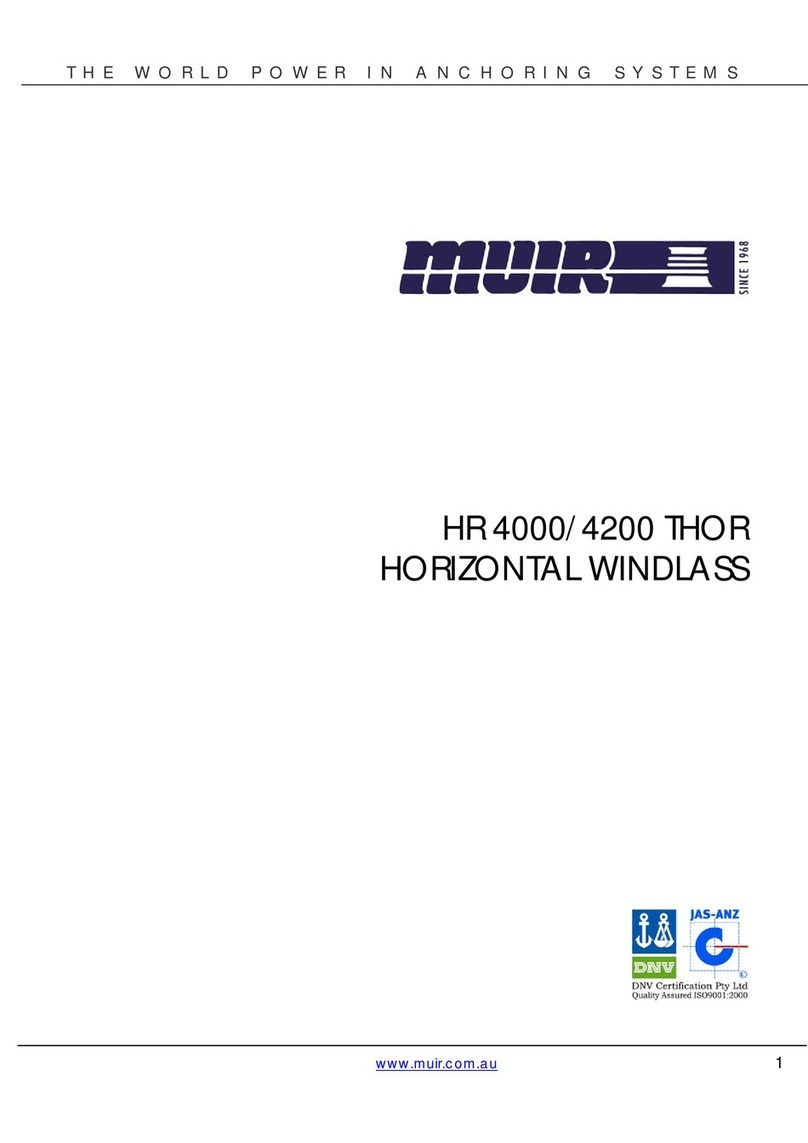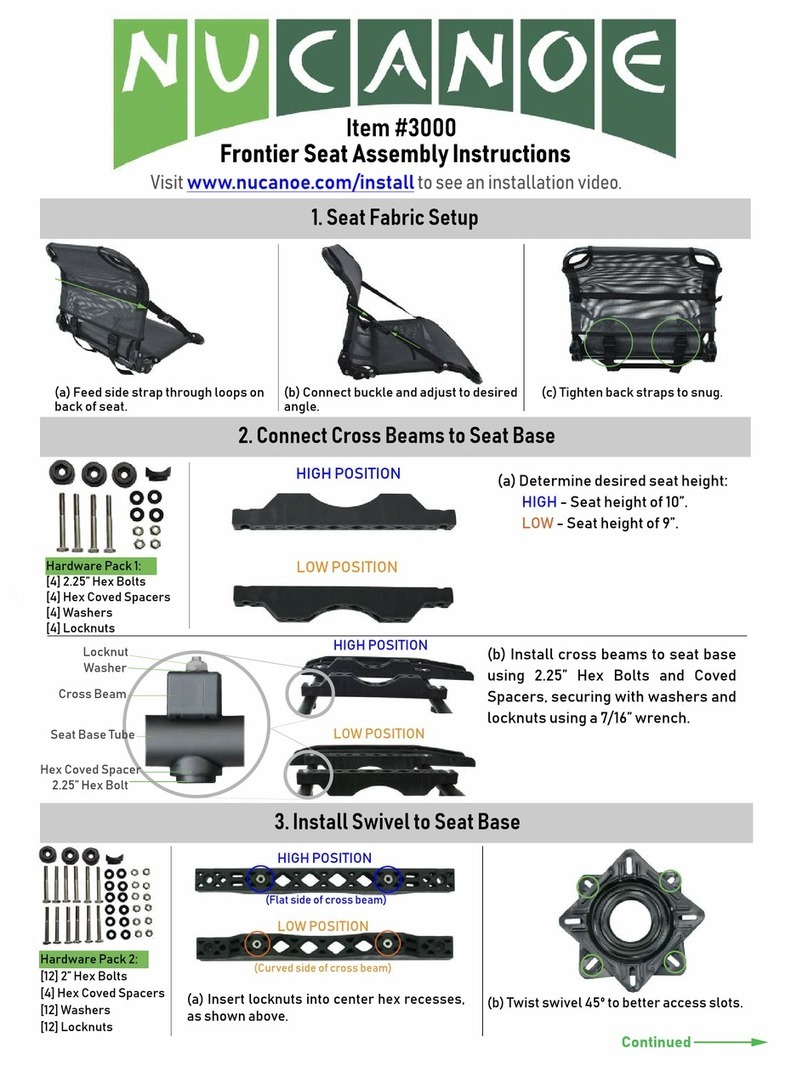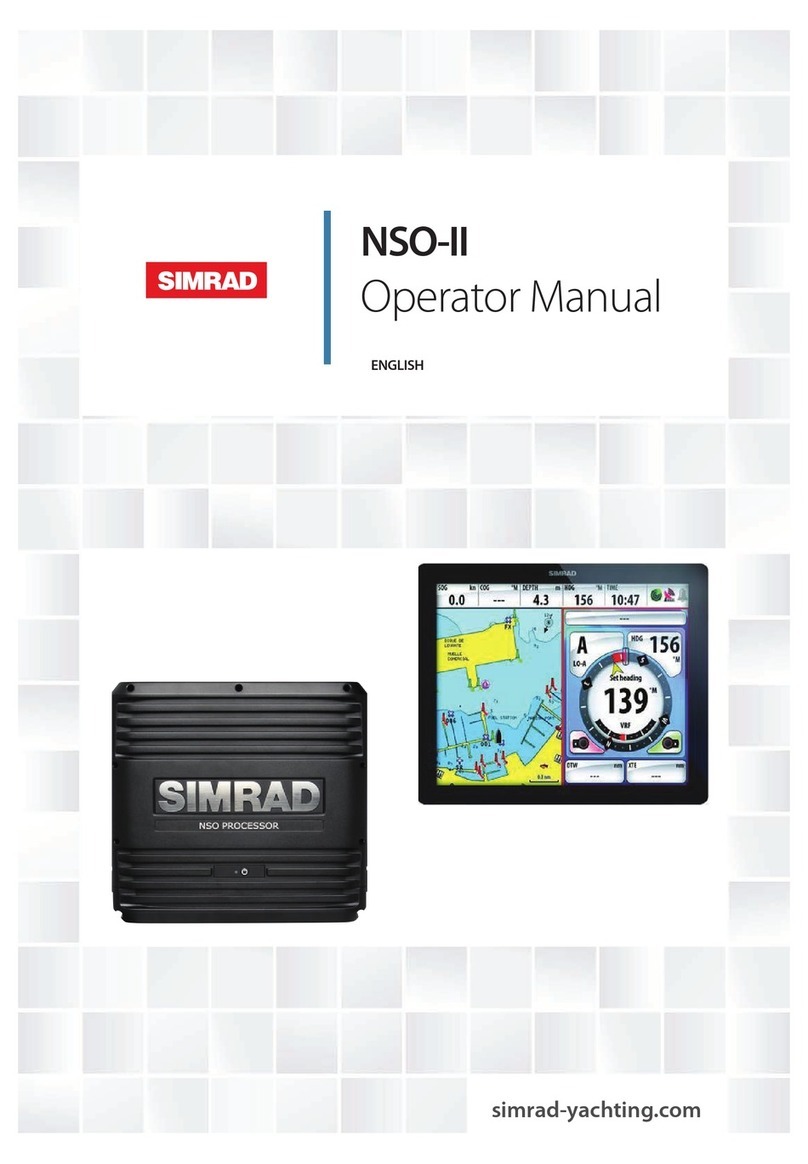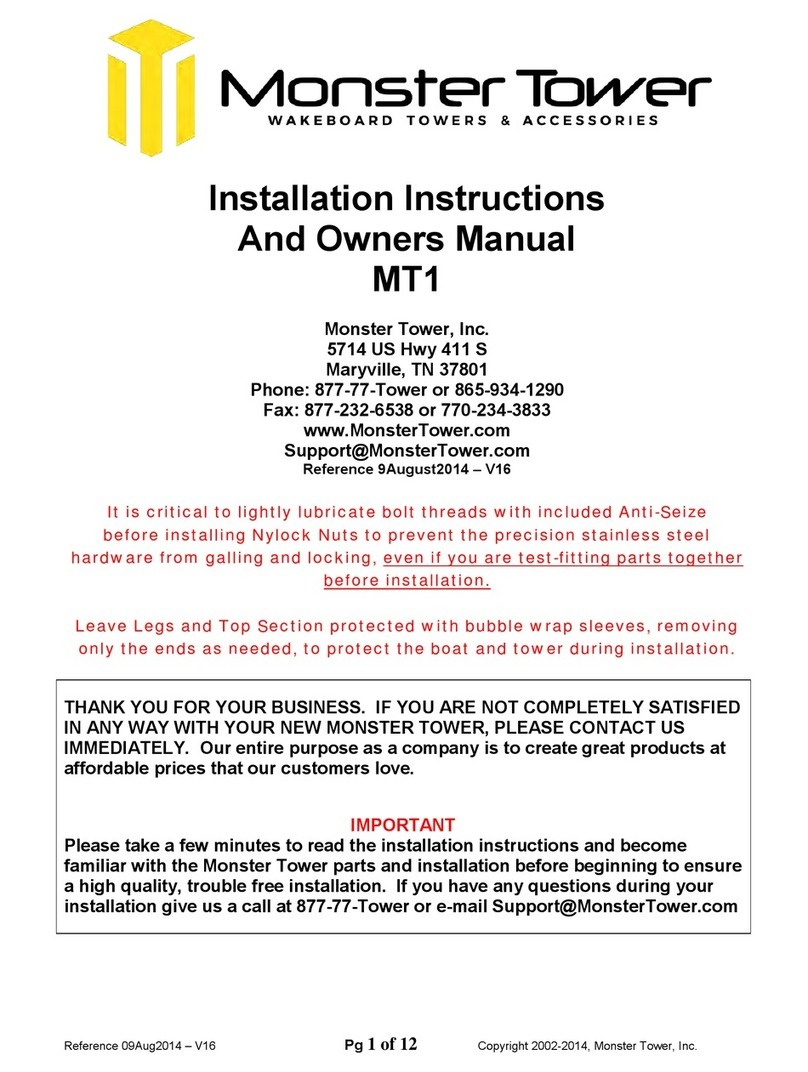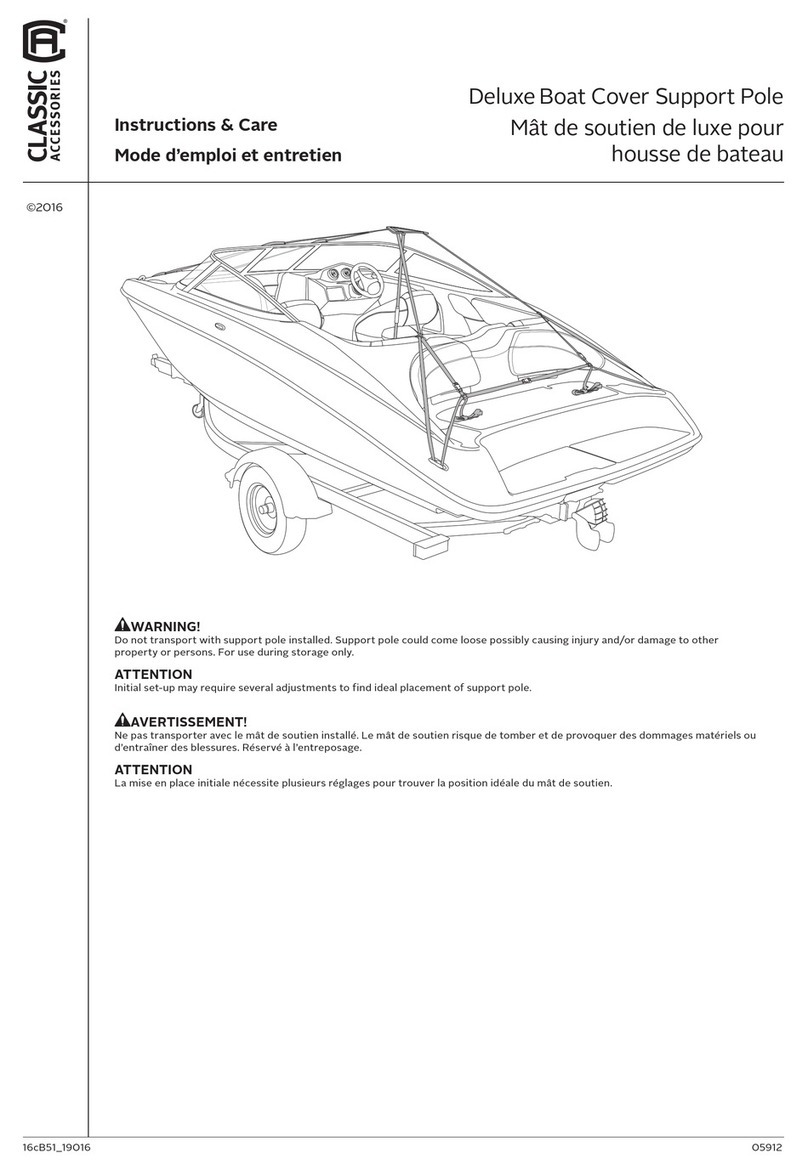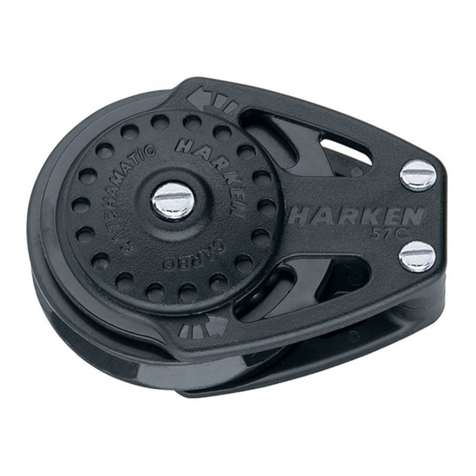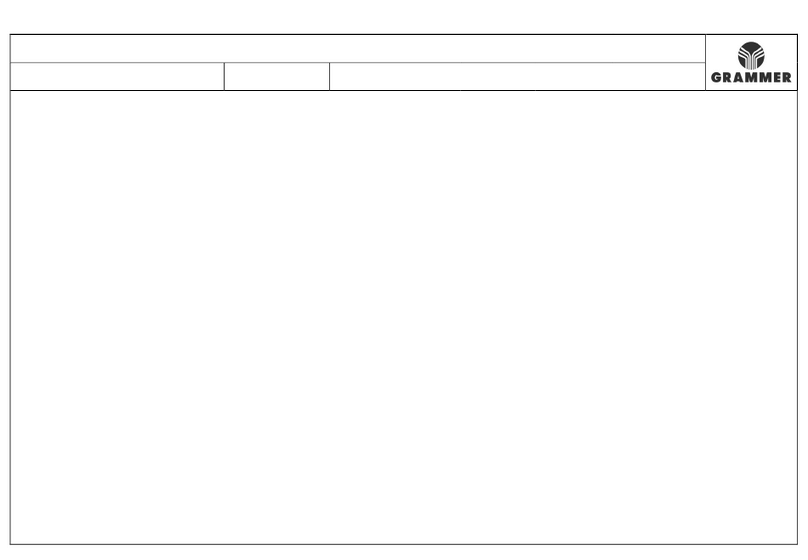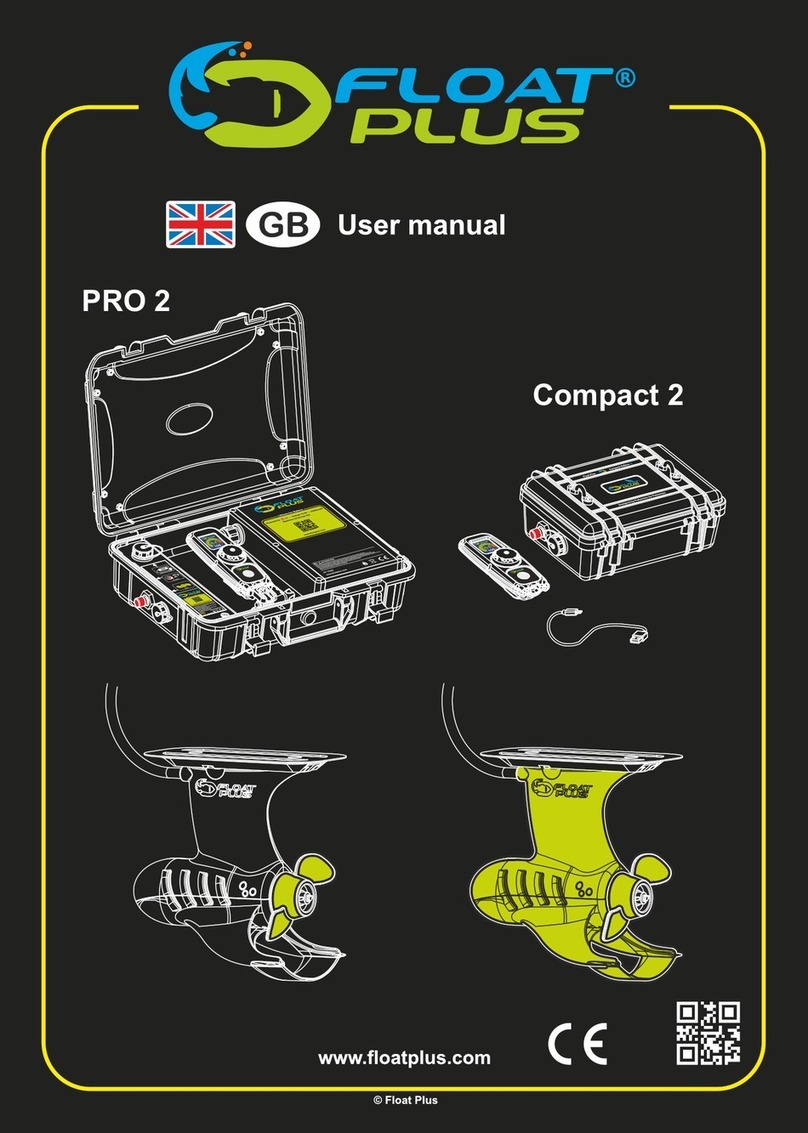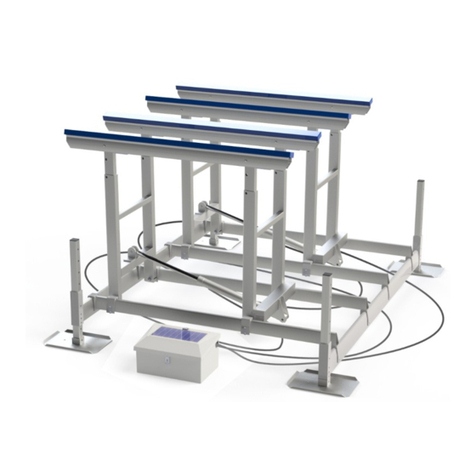SPW VARIPROFILE VP-64 User manual

made by
Manual for the
Feathering Propeller VP-64 and VP-76
2- and 3-blade model
Feathering Propeller
®
Feathering Propeller
®
Formular-Nr. 125 Rev.-Nr.:02 10/20

Installation on a saildrive...........................................................................................Seite 3
Installation on a shaft................................................................................................Seite 4
Pitch Adjustment .......................................................................................................Seite 5
Pitch adjustment table...............................................................................................Seite 9
Operation & Servicing.................................................................................................Seite 7
Removal instructions.................................................................................................Seite 8
Torque settings for the prop-nut ...............................................................................Seite 8
Installation on a saildrive
Formular-Nr.:51 Rev.-Nr.:09 08/07
2 3
»See that the spacer supplied with your saildrive is mounted.
»Make sure your anode has good contact with the saildrive.
»Mount the hub (1) on the splined shaft (2) and apply a
small drop of loctite “low” to the thread of the nut (3).
Tighten the nut (3) while countering the hub with the hook
wrench (7). (See the torque specication for nut (3) in
the installation instruction of your saildrive)
After installation, check that the hub does not move axial
on the saildrive shaft. If so, t one or more of the different
spacer disc (8) between the forward end of the prop and
the saildrive disc to reduce it. The spacer discs are deliv-
ered with the prop.
»Apply a small drop of loctite “low” to the thread of the
set-screw (4) and tighten (17 Nm / 15 Ft.lb) to secure the
prop nut (3).
»Now screw the blade assembly (5) clockwise onto the
large thread of hub (1) until you t the prop strongly onto
the hub (1). Do not use Loctite on the thread of the blade
assembly (5)!
»Take care that the set screws (6) are plane with housing
while set the 6off screws tighten.
»Apply a small drop of loctite “medium” to each thread
of the 6 off set screws (6) and tighten (20 Nm / 15 Ft.lb)
together with washer (7).
»Make sure that the set screw holes for set screw (6)
are aligned with the borings of the hub.
»Check the function and see that the blade movement
is free.
1. Hub
2. haft
3. Nut (SW24)
4. Set-Screw M8x20
5. Blade assembly
6. Set-Screw M8x16 and
washer dia. 8 (7)
7. Hook Wrench 45-50
8. Spacer-Disc
1off -0,5 & 2off - 0,25mm
(Only use if needed)
WARNING:
Engage forward/reverse at idling RPM`s only. Stop the engine immediately if any strange sounds or vibrations
are noticed coming from the propeller. Check that the propeller works in both forward and reverse before starting
each voyage. Do not start the the engine until the boat is in the water. Keep away from moving parts while handling
the propeller, the blades are like knives, and can cause considerable damage. Do not attempt to come close to the
propeller unless the engine is stopped.
1
3
7
7
4
5
6
2
8
Slightly paint the thread of the propeller hub (1) with the
enclosed TIKAL Tef gel to enable a later easy disassembly
»

Pitch Adjustment
A. Adjusting the forward pitch:
1. Remove the set screw (1) (3 mm allen key).
Under water: only 2 turns loosen.
2. Turn the adjusting screw (2) which is marked as
“AH” or “V” with the 4 mm Allen-key as follows:
2a. Increasing of pitch:
»Turn the adjusting screw (2) clockwise.
(see “NOTE” and page 8)
»Secure set screw (1) with LOCTITE low (pink)
Lock set screw (1) 3 Nm / 2 Ft.lb.
2b. Reducing of pitch:
»Turn the adjusting screw (2) anti-clockwise.
(see “NOTE” and page 8)
»Secure set screw (1) with LOCTITE low (pink)
Lock set screw (1) 3 Nm / 2 Ft.lb.
B. Adjusting the reverse pitch:
1. Remove the set screw (3) (3 mm allen key).
Under water: only 2 turns loosen.
2. Turn the adjusting screw (4) which is marked as
“AS” or “R” with the 4 mm Allen-key as follows:
2a. Increasing of pitch:
»Turn the adjusting screw (4) anti-clockwise.
(see “NOTE” and page 8)
»Secure set screw (3) with LOCTITE low (pink)
Lock set screw (1) 3 Nm / 2 Ft.lb.
2b. Reducing of pitch:
»Turn the adjusting screw (4) clockwise.
(see “NOTE” and page 8)
»Secure set screw (3) with LOCTITE low (pink).
Lock set screw (1) 3 Nm / 2 Ft.lb.
It is quite possible to set the pitch con-
tinuously variable and independently for
forward and reverse. The turning of the
adjusting screws (2) & (4) in Figure “Exam-
ple” by half a revolution changes the pitch
approx. 1“. That means a quarter turn (90°)
changes the pitch by ½” and a one full turn
by 2” etc. For a check of pitch adjustments
there are markings on the hub rotating
ange. To return to original factory pitch
settings, line up “V” resp. “R” markings on
the hub face. (see example beside)
Marked lettering of a LH Propeller
++
--
Formular-Nr.:51 Rev.-Nr.:09 08/07
4 5
Installation on a Shaft
»mount the hub (1) on the shaft (2). Make sure the prop
taper and keyway mate properly with shaft and key and
the top of the key does not touch the hub! File key if
necessary.
»Fit the counter screw (9) into the thread for the setscrew.
Pay attention not to set the prop nut with the counter
screw!
»apply a small drop of loctite “medium” to the threads of
the nut (3) and tighten strongly 80 Nm / 60 Ft.lb), while
blocking the hub with one hand against the counter
screw.
»after tightening the prop nut (3) remove the counter screw
(9)
»apply a small drop of loctite to the thread of the setscrew
(4) and tighten (20 Nm / 15 Ft.lb.).
»align the blade assembly (5) with the boring and pivot
pins and push onto the hub (1).
»mount the socket screws (7) with washers (6) and tight-
en (50 Nm / 37 Ft.lb). use loctite “medium” to secure the
socket-screws (7).
»apply a small drop of loctite “low” to the threads of the
set screws (8) and tighten (10 Nm / 7 Ft.lb)
»check the function and see that the blade movement is
free.
»make sure you have a shaft anode with good contact to
the shaft.
WARNING:
Engage forward/reverse at idling RPM`s only. Stop the engine immediately if any strange sounds or vibrations are
noticed coming from the propeller. Check that the propeller works in both forward and reverse before starting each
voyage. Do not start the the engine until the boat is in the water. Keep away from moving parts while handling the pro-
peller, the blades are like knives, and can cause considerable damage. Do not attempt to come close to the propeller
unless the engine is stopped.
1
1
3
3
7
4
5
6
9
2
8
1. Hub
2. Shaft
3. Nut SW24 (VP-64)
or SW30 (VP-76)
4. Set-Screw M8x12 (VP-64)
or M8x16 (VP-76)
5. Blade assembly
6. Washer ø10
7. Socket Screws M8x25 (VP-64)
or M10x30 (VP-76)
8. Set-Screw M6x10 (VP-64)
or M8x12 (VP-76)
9. Counter Screw M8x120
In general the pitch settings are done in the factory and are
ready set for your boat and engine. Should it be necessary
to adjust the pitch it is very simple on the VARIPROFILE,
and can be done in or out of the water in a matter of few
minutes.
Possible reasons for pitch adjusting might be:
»If the engine does not reach the desired RPM
reduce the forward pitch.
»If the engine exceeds the desired RPM
increase the forward pitch.
»If the prop walk in astern is too strong
reduce reverse pitch.
Possible adjustment range see pitch sheet at page 6.
Example below is showing a RH display
LH lettering is marked to Detail “D” & “E”
R= AS (Astern) V= AH (Ahead)
NOTE: It is quite possible to set the pitch continuously variable and independently for forward and reverse. Turning
of the adjusting screws (2) & (4) by half a revolution (180°) changes the pitch approx. 1“. This will change the engine
revolution by approx. 200.
Möglich einstellbare Steigung
siehe Tabelle S. 5!
Pay attention
not to set the
prop nut with the
counter screw

Pitch adjustment table Operation & Servicing
The VARIPROFILE feathers automatically when the shaft rotation is stopped. After engine start-up and shifting into gear the
blades will engage in either forward or reverse.
THE BEST WAY TO FEATHER THE PROPELLER IN THE SAILPOSITION IS:
VARIPROFILE sailposition with
mechanical gear-box:
»Power at 2 to 3 knots in forward.
»Stop the engine and engage the transmission in
reverse to stop the freewheeling of the shaft.
VARIPROFILE sailposition with
hydraulic transmission:
»Power at 3 to 4 knots in forward.
»Stop the engine while still engaged in forward.
The remaining oil pressure of the transmission
will stop spinning the shaft to feather the blades
in the sailposition.
If the propeller is not feathered in the sailposition the shaft will freewheel like with a xed propeller. In that case start the
engine again and repeat the steps above. Once the prop is feathered , you may remain in gear or shift into neutral.
DO NOT stop the engine while it turns in reverse. In this case the blades will stay in the reverse position and will not feather.
You can actually use this feature to drive a shaft generator.
TROUBLE SHOOTING: If the propeller does not work in forward or reverse go systematically through the points below:
»Check low idle of the engine. It should be 900 to 1000
rpm in idle.
»Check shifting movement of the transmission lever.
Make sure that the shifting travel is not too short. The
amount of lever travel, as measured at the pivot point of
the actuating lever, between the neutral position and end
positions for forward and reverse can be found in the
owners manual of your transmission. A larger amount of
lever travel is in no way detrimental.
»Check the clutch discs of the transmission. They could
be worn out.
Formular-Nr.:51 Rev.-Nr.:09 08/07
6 7
Prop.-ø min. tolerance:
±0.3“
max. tolerance:
±0.3“
2 blade
ahead
(V)
13“ 7.5“ 12“
14“ 8“ 13“
15“ 9“ 14“
16“ 9.5“ 15“
17“ 10“ 15.5“
18“ 10.5“ 16“
2 blade
astern
(R)
13“ 7“ 12“
14“ 8“ 13“
15“ 9“ 14“
16“ 10“ 15“
17“ 10.5“ 16.5“
18“ 11“ 17“
Prop.-ø min. tolerance:
±0.3“
max. tolerance:
±0.3“
3 blade
ahead
(V)
13“ 7“ 12“
14“ 7.5“ 12.5“
15“ 8“ 13“
16“ 9“ 14“
17“ 9.5“ 14.5“
18“ 10“ 15“
3 blade
astern
(R)
13“ 6.5“ 11.5“
14“ 7“ 12“
15“ 8“ 13“
16“ 9“ 14“
17“ 9.5“ 14.5“
18“ 10“ 15“
Prop.-ø min. tolerance:
±0.3“
max. tolerance:
±0.3“
2 blade
ahead
(R)
17“ 11“ 17“
18“ 11.5“ 18“
19“ 12.5“ 18“
20“ 12.5“ 19“
21“ 13“ 19“
22“ 14“ 20“
2 blade
astern
(R)
17“ 9“ 15“
18“ 10“ 16“
19“ 11“ 17.5“
20“ 11“ 17.5“
21“ 12“ 18.5“
22“ 13“ 19.5“
Prop.-ø min. tolerance:
±0.3“
max. tolerance:
±0.3“
3 blade
ahead
(V)
17“ 10“ 16“
18“ 10“ 16.5“
19“ 11“ 17“
20“ 12“ 18“
21“ 13“ 19“
22“ 14“ 20“
3 blade
astern
(R)
17“ 10“ 16“
18“ 10“ 16.5“
19“ 11“ 17“
20“ 12“ 18“
21“ 13“ 19“
22“ 14“ 20“
Prop.-ø min. tolerance:
±0.3“
max. tolerance:
±0.3“
2 blade
ahead
(V)
17“ 11“ 17“
18“ 11.5“ 18“
19“ 12.5“ 18“
20“ 12.5“ 19“
21“ 13“ 19“
22“ 14“ 20“
2 blade
astern
(R)
17“ 9“ 15“
18“ 10“ 16“
19“ 11“ 17.5“
20“ 11“ 17.5“
21“ 12“ 18.5“
22“ 13“ 19.5“
Prop.-ø min. tolerance:
±0.3“
max. tolerance:
±0.3“
3 blade
ahead
(V)
17“ 10“ 16“
18“ 10“ 16.5“
19“ 11“ 17“
20“ 12“ 18“
21“ 13“ 19“
22“ 14“ 20“
3 blade
astern
(R)
17“ 10“ 16“
18“ 10“ 16.5“
19“ 11“ 17“
20“ 12“ 18“
21“ 13“ 19“
22“ 14“ 20“
VP-64
RH and LH
VP-76 RH
VP-76 LH
WARNING: It is important to follow the instructions below
carefully so as to avoid excessive load and shock to the
gears, shortening their life.
»When going from ahead to astern or the opposite, it is
necessary to idle down and shift at low rpm’s (max
.1200rpm) between gears to allow smooth reversing of
rotation without binding. This will substantially length-
en the service life of your propeller gears.
»When going from ahead to astern or the opposite, you
can hear the turning-noise of the feathering blades.
This is normal and not a problem or a defect of your
VARIPROFILE.
»The propeller body must always be completely lled
with a high viscosity grease. We recommend synthetic
grease typ TW.2 GEL or mineral multi-purpose grease
EP/SAL
»The propeller must be protected from electrolytic cor-
rosion by tting the usual zinc anodes on the shaft plus
the prop anode. We recommend the replacement of the
anode once a year.
»If you want to protect your VARIPROFILE with Antifoul-
ing, use only Antifouling which needs a primer rst.
Otherwise chemical interaction and decomposition
could occur. Our recommendation is Velox TF plus
including a primer ( offers also protection against elec-
trolyses ), available from your VARIPROFILE distributor.
Never dismantle the VARIPROFILE yourself!
Disassembly and reassembly require special tools and technical know-how only available at the factory
or their approved service centres.
SERVICING
The VARIPROFILE needs to be greased a minimum of once a year with the
special EP/SAL lubricant available from your VARIPROFILE dealer. The VARIPRO-
FILE body should always be completely lled with a high viscosity grease of a
hydrophobic nature. Remove the cap screw and screw in the lubricating nipple
which is supplied with the tools. Further remove the zinc anode! With each pump
of the grease gun rotate the propeller from forward stop to reverse stop to allow
the grease to work through the propeller. Stop to pump when enough grease
comes out of the anode drill hole on top of the prop (Fig.1).
Factory supplied special grease EP/SAL is recommended and available from
your VARIPROFILE distributor. Avoid regular white grease (sterntube-grease ) !

Removal instructions Torque settings for the prop-nut
DO NOT DISMANTLE THE PROPELLER UNIT (5)!
»Remove the blade assembly (5) from the hub (1).
»Therefore remove rst the 3 off Set-Screws (8).
»Now you can remove the Socket Screws (7). Take care
that the prop will not fall off after removing all Socket
Screws!
»Dismount the blade assembly (5) from the hub (1).
»Remove the Set-Screw (4) completely and screw into the
same hole (M8) the Counter Screw (9). Pay attention not
to set the prop nut with the counter screw!
»now remove the prop nut (3) while blocking the hub with
one hand against the counter screw.
»align the puller with the socket screws (7) of the hub (1)
and tighten (20 Nm / 15 Ft.lb).
»do not tighten the set screws (8)!
»tighten the extractor screw clockwise strongly, while hold-
ing by hand the counter screw (9).
»you can now remove the hub from the shaft.
Standard – thread
M 14 x 2
UNC 1/2 “-13
40 Nm
30 ft/lb
M 16 x 2
BSW 5 / 8 “ – 11
UNC 5 / 8 “ - 11
60 Nm
45 ft/lb
M 16 x 2
Yanmar Saildrive
SD 20 & SD 31
60 Nm /
45 ft/lb
M 20 x 2,5
BSW 3 / 4 “ – 10
UNC 3 / 4 “ - 10
125 Nm
/ 95 ft/lb
UNC 7 / 8 “-9 160 Nm
115 ft/lb
M 24 x 3
BSW 1 “ - 8
UNC 1 “ - 8
210 Nm
155 ft/lb
M 27 x 3 315Nm
230 ft/lb
M 30 x 3,5
UNC 1 1/8” - 7
350 Nm
255 ft/lb
Fine – thread
M 14 x 1,5
BSF 1/2 “- 16
40 Nm
30 ft/lb
M 16 x 1,5
BSF 5 / 8 “ – 14
UNC 5 / 8 “ - 18
70 Nm
50 ft/lb
M 20 x 1,5
BSF 3 / 4 “ – 12
UNC 3 / 4 “ - 16
135 Nm
100 ft/lb
M 20 x 2
Yanmar Saildrive
SD 40 & SD 50
100 Nm /
75 ft/lb
M 24 x 2
BSF 1 “ - 10
UNF 1 “ - 12
225 Nm
165 ft/lb
M 30 x 2 430 Nm
315 ft/lb
SUBJECT TO TECHNICAL ALTERATIONS; ERRORS and MISPRINTS
Formular-Nr.:51 Rev.-Nr.:09 08/07
8 9
1
1
3
3
7
4
5
6
9
2
8
1. Hub
2. Shaft
3. Nut SW24 (VP-64)
or SW30 (VP-76)
4. Set-Screw M8x12 (VP-64)
or M8x16 (VP-76)
5. Blade assembly
6. Washer ø10
7. Socket Screws M8x25 (VP-64)
or M10x30 (VP-76)
8. Set-Screw M6x10 (VP-64)
or M8x12 (VP-76)
9. Counter Screw M8x120
Pay attention
not to set the
prop nut with the
counter screw
It is recommended to only use the special puller available from your VARIPROFILE dealer.

NotesNotes
Formular-Nr.:51 Rev.-Nr.:09 08/07
10 11

Westkai 58, 27572 Bremerhaven
Telefon +49 (0)471 / 7 70 47
Telefax +49 (0)471 / 7 74 44
[email protected], www.spw-gmbh.de
86 517-09 DE-HH
GL Rules I, Part 1, Chapter 2,Section 6
For further informations visit
www.variprofile.com
The VARI-Family
Feathering Propeller
®
Feathering Propeller
®
made by
This manual suits for next models
1
Table of contents
Popular Boating Equipment manuals by other brands
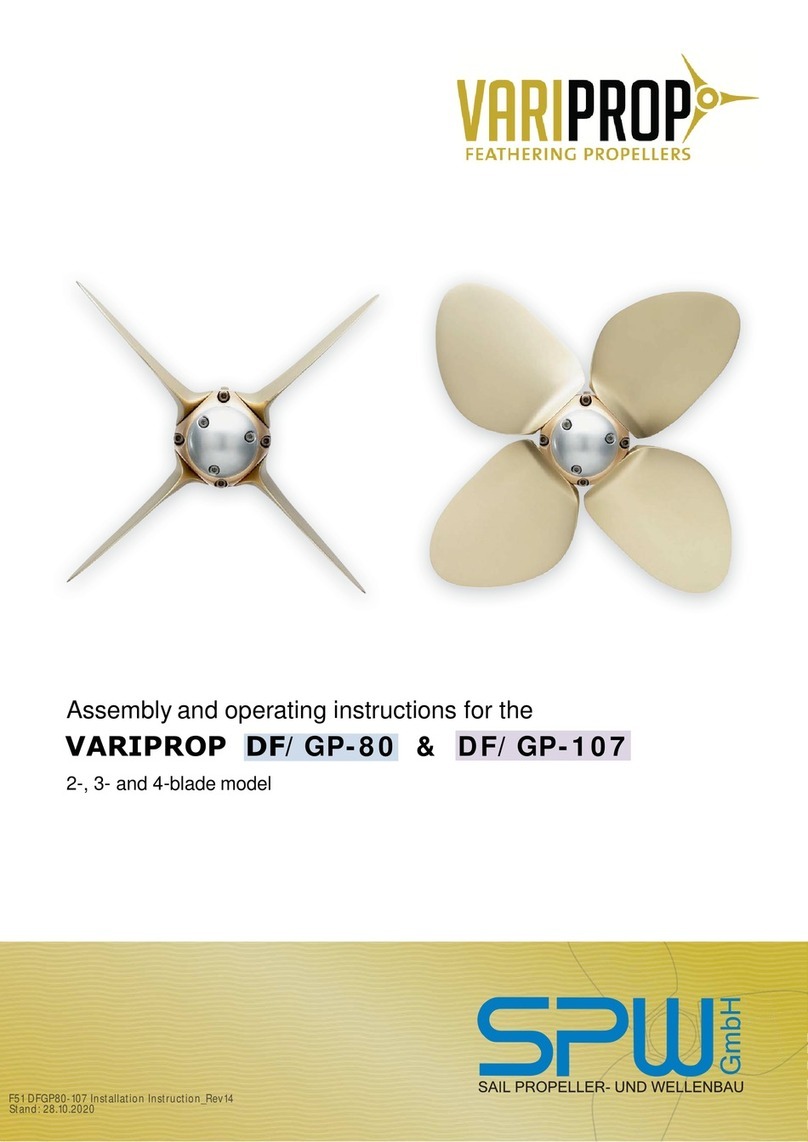
VariProp
VariProp DF-80 Assembly and operating instructions
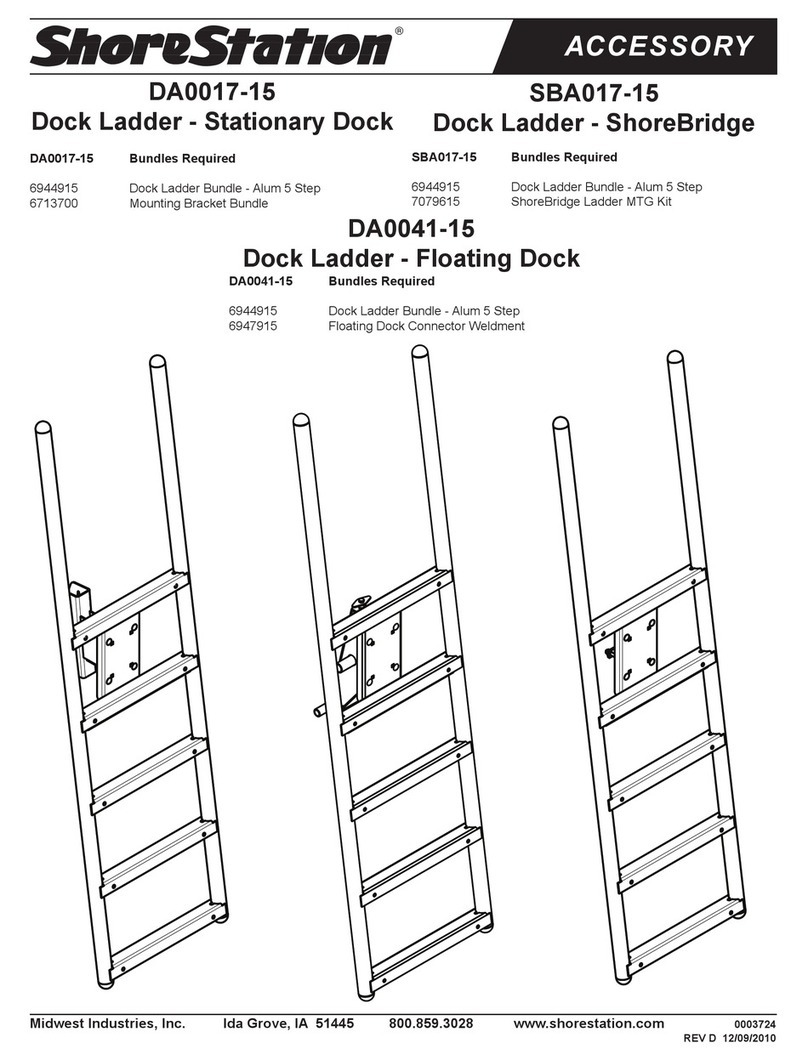
ShoreStation
ShoreStation DA0017-15 manual
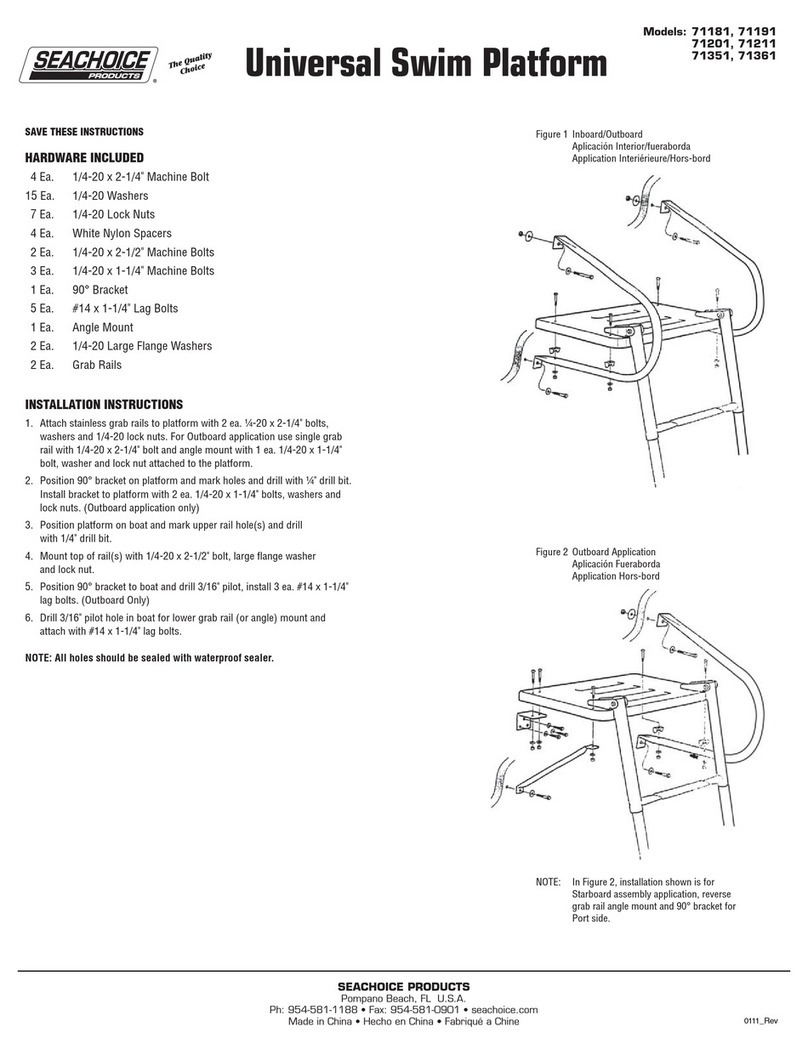
SEACHOICE
SEACHOICE 71181 installation instructions
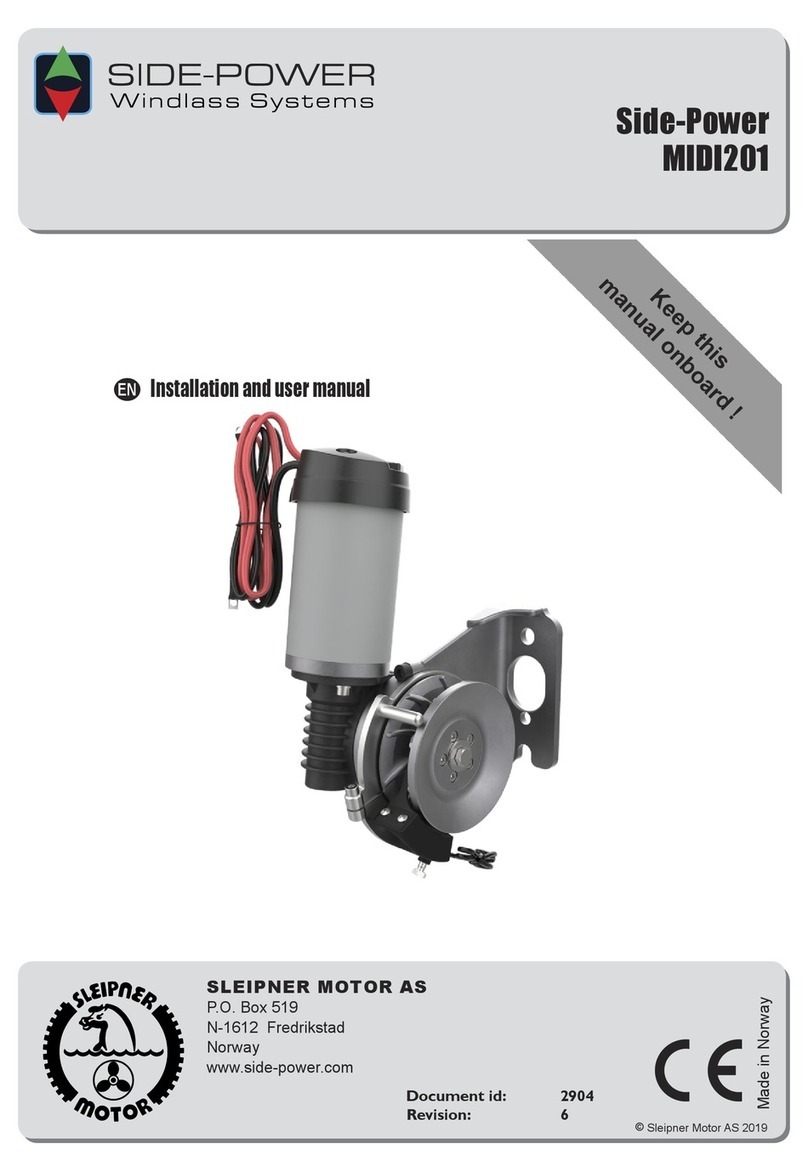
Side-Power
Side-Power MIDI201 Installation and user manual
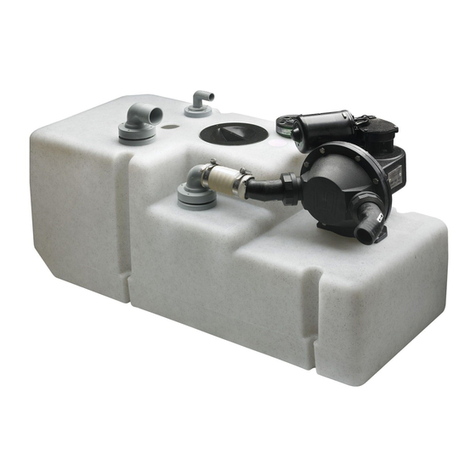
Vetus
Vetus WWS Installation instructions and owner's manual
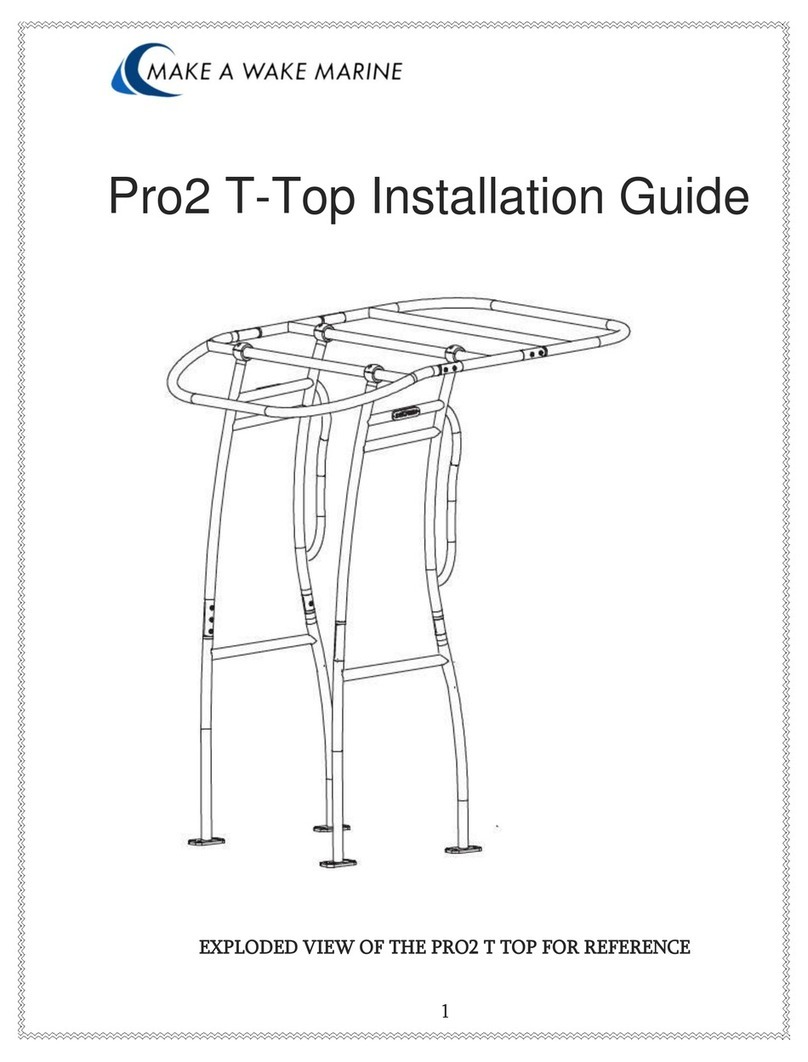
MAKE A WAKE MARINE
MAKE A WAKE MARINE Pro2 T-Top installation guide
